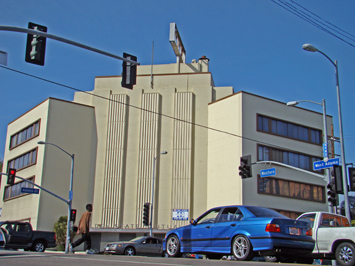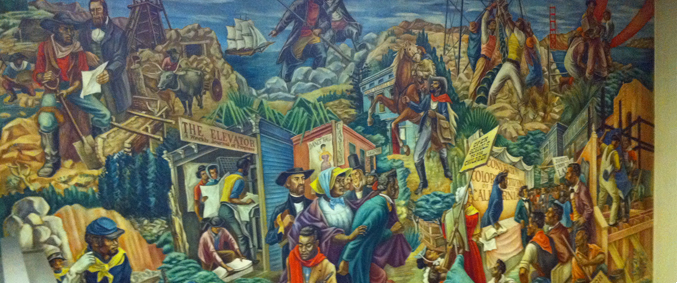News Release from the office of 9th District Councilwoman Jan Perry
Monday, December 3, 2012
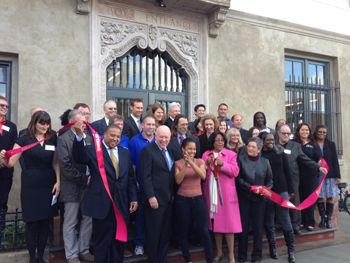
Los Angeles, December 3, 2012—A distinguished landmark in South Los Angeles—the 28th Street YMCA designed by African-American architect Paul Williams—has been restored to serve low-income adults and youth transitioning from homelessness to independent living. Co- developed by Clifford Beers Housing (CBH) and Coalition for Responsible Community Development (CRCD), the $21 million, 49-unit community also will serve homeless and low- income individuals, including those living with mental illness, CBH executive director Jim Bonar told an audience of dignitaries at the opening of the 28th Street Apartments today.
“With this milestone, we are witnessing the culmination of our shared dream to celebrate our rich history, develop quality housing for our young people and create a space in which they can grow and thrive, said Councilwoman Jan Perry (9th District) who worked closely with the developers to ensure this historic landmark was brought back to life and would continue to serve the community. “By reinventing this iconic Paul Williams building in the Vernon-Central community, we are moving our community forward, and I thank both CRCD and Clifford Beers Housing for investing in our youth and their future.”
Referring to the project, CBH’s Bonar said, “This building is far more than just an early design by the legendary Paul Williams. It was an integral part of life in the robust African American community which dominated Central Avenue from the 1920s to 1960s. Our plans for the renovation of the existing building and the new wing were guided by two imperatives: to honor the history of the building and revive its service to the community in the 21st century. “
In its new incarnation, the original YMCA accommodations have been transformed into 24 units including kitchenettes and private bathrooms—a far cry from its former configuration with 50 rooms, shared bathrooms and a common cafeteria. The new wing, comprised of 25 studio apartments, will accommodate low-income and formerly homeless individuals. Eight units are set-aside for 18-24 year-olds. Recreation amenities include a restored gym and a rooftop garden.
On the ground floor of the historic building CRCD will operate the new VCN City of Los Angeles YouthSource (no space) Center, which will provide educational and job training opportunities for young adults.
“The project and partnership with Clifford Beers Housing demonstrates our commitment to affordable housing and supportive services for our city’s most vulnerable populations and further affirms the mission and vision of CRCD and its work in this neighborhood,” said Mark Wilson, CRCD Executive Director.
Also playing a major role will be Kedren Community Health Center, a provider of mental health services. “We can’t over-emphasize the importance and need for affordable supportive housing for the community, noted Dr. John Griffith, President and CEO. “ Kedren is excited to partner in this endeavor. The services provided to the residents will make the important difference in helping to transform lives of the persons in recovery.”
Designed by Koning Eizenberg, the project was built to LEED Gold criteria.
“The design goal was to clarify the original 1926 work by Williams while also defining a complimentary addition that strengthened the overall development,” said architect Brian Lane.
New units are housed in a separate five-story wing behind the original building. The south facade is shaded by vertical photovoltaic panels and wrapped to the north with a perforated metal screen that reveals a pattern abstracted from the building’s historic ornament. An elevated roof garden provides outdoor social space that links old and new.
Funding sources for the project came from the Community Redevelopment Agency of the City of Los Angeles; Corporation of Supportive Housing; Wells Fargo Bank; Los Angeles County Community Development Commission; Mental Health Services Act/Los Angeles County Department of Mental Health; California Housing Finance Agency; Los Angeles Housing Department; Community Development Block Grant (through the City of Los Angeles Community Development Department); California Tax Credit Allocation Committee.










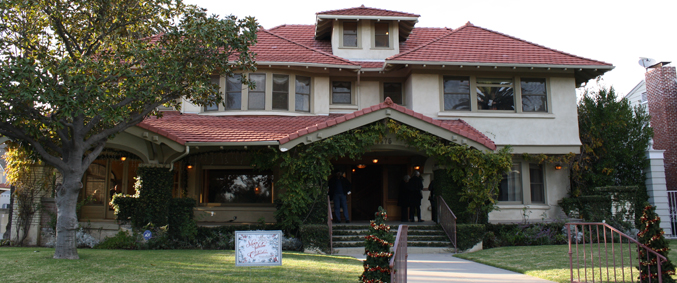
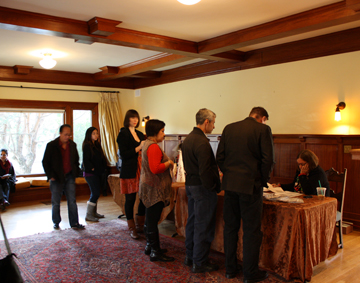 Later in the evening, groups gathered at the Welcome House for the start of the progressive dinner. Volunteers from WAHA led them through each course of the meal which was set up in a different house; from the Atomic-Age Appetizer House through the Salad and Dinner Houses, ending finally at a Spanish-style villa serving as the Dessert House.
Later in the evening, groups gathered at the Welcome House for the start of the progressive dinner. Volunteers from WAHA led them through each course of the meal which was set up in a different house; from the Atomic-Age Appetizer House through the Salad and Dinner Houses, ending finally at a Spanish-style villa serving as the Dessert House.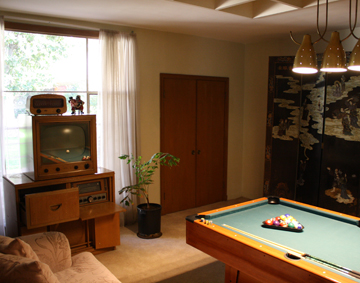 The Appetizer House is one example of this honesty. The swanky Atomic-Age residence is a Paul Williams design officially known as the Taylor Residence.
The Appetizer House is one example of this honesty. The swanky Atomic-Age residence is a Paul Williams design officially known as the Taylor Residence.  When Golden State Mutual Life Insurance went bankrupt in 2009, the historic building that had housed the West Adams firm since 1949 was seized by state regulators and slated for liquidation of all assets.
When Golden State Mutual Life Insurance went bankrupt in 2009, the historic building that had housed the West Adams firm since 1949 was seized by state regulators and slated for liquidation of all assets.